It's been a long time since the last proper installment in the standard-setting Final Fantasy series. While Square Enix did ship numerous games bearing the Final Fantasy brand after 2001's Final Fantasy X, it took all these years before another lengthy, ambitious, lavishly produced, traditional role-playing game would arrive. Final Fantasy XII arrives at the end of the PlayStation 2's lifecycle, whereas Final Fantasy X benefited from a presentation that was truly cutting edge. This latest installment in the series also introduces a new strategic combat system that makes gameplay more cohesive yet more hands-off than before. In spite of this trade-off, it's an evolutionary step for the series and a refreshing change. And underneath the overhauled combat and the distinctive visual style, this is still Final Fantasy. Outstanding art direction, a likable cast of characters, a lengthy quest, and plenty of challenging battles all await you in this next installment to live up to the Final Fantasy name.
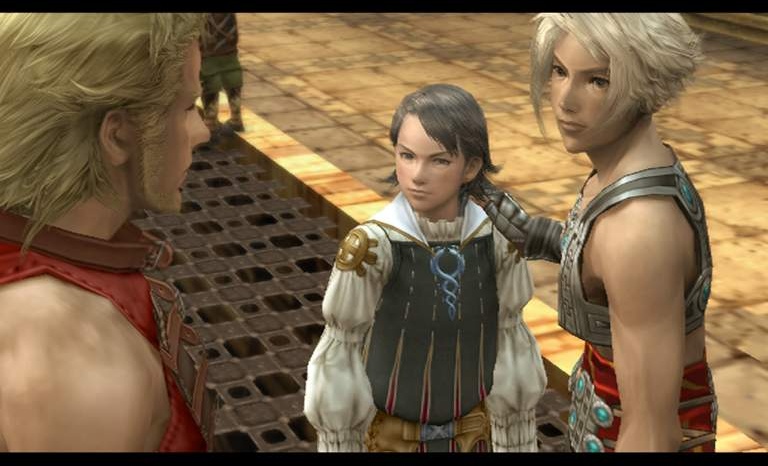
Unlike most previous Final Fantasy games, this latest game takes place in a particular fantasy setting that's already been established by some of its predecessors. Final Fantasy XII's world of Ivalice, first seen in 1998's great Final Fantasy Tactics and later again in Final Fantasy Tactics Advance, is like a Japanese take on Star Wars' galaxy far, far away. Men and women walk the streets of Ivalice's impressive cities together with hulking, lizardlike creatures and other strange beings, and political unrest and war threaten their livelihoods as a resistance movement mounts to overthrow an empire that's taken over much of the land. Ivalice is more fantasy than science fiction, yet the air battles featured in the game's opening cutscene, and the decidedly high-tech airships that figure prominently throughout the rest of the game, give this Final Fantasy its token sci-fi flair. The story follows a cast of characters who set out to free the country of Dalmasca from the clutches of the Archadian Empire, which took it over by force. During the journey, you'll learn much more about the history of Ivalice, the strange forces at play behind the scenes, and, of course, about your characters.
The ragtag group of characters you'll be guiding throughout most of the game are as unlikely a lot as you've probably come to expect from a Final Fantasy game. Vaan is the token androgynous male lead, sort of an Aladdin-type with a good-natured personality and strong instincts. He might look a bit like a girl, but he's your typical good guy. His childhood friend, Penelo, somehow gets swept up into everything along with him, and soon enough Vaan also runs into a smooth-talking sky pirate named Balthier and his stern-but-stunning companion, a rabbit-eared woman named Fran. A strong-willed princess and a disgraced captain of Dalmasca's defeated military round out the main cast, though they'll be joined by other companions at various times throughout the game. Much like the cast, the story itself is similar to previous Final Fantasy games in a lot of ways, resulting in many implausible but exciting sequences and some dramatic, emotionally charged moments later on. It's a very good story overall, especially once the Empire's true intentions become clearer and the real villains are unmasked. The plot unfolds through lots of beautifully produced and expressive cinematic cutscenes and plenty of well-written dialogue. In between all this, expect a lot of combat, exploration, and character building--the hallmarks of Final Fantasy gameplay.
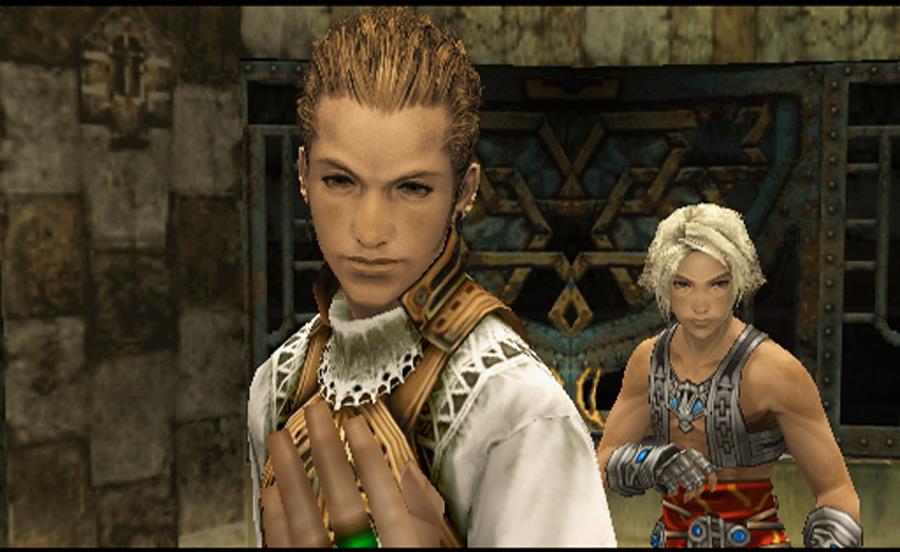
The biggest difference between this Final Fantasy game and its predecessors is in how the combat works. These changes fundamentally affect the overall flow of the game, not necessarily making it flat-out better or worse than past Final Fantasies, but certainly different. Combat occurs seamlessly in the context of the areas you'll be exploring, rather than in random battles that sporadically force you out of exploration mode and into combat mode. As a result, you'll almost always see your enemies on the battlefield (or on your map) before you engage them, and there's no longer a discrete difference between the exploration mode and the combat mode--they're now one and the same. The benefit of this is that the frustrations of constantly running into random enemy encounters, a feeling that's common to Japanese role-playing games, is simply not there in Final Fantasy XII. Combat is still frequent and unavoidable, but not having to constantly switch between fighting and exploration helps make the game flow more smoothly.
The downside of the new combat system is that it's often on a smaller scale than in past games. Final Fantasy games are known for pitting you against some impossibly big and imposing-looking enemies, but since combat in this game takes place within the same environments you'll be exploring, it doesn't have quite the same larger-than-life sense of scale as before. Don't worry, though--you'll still get to fight plenty of fearsome, powerful-looking opponents. But you'll be looking at the bigger ones' feet as you hack away. Yet it's the real-time nature of the combat that's bound to be the most controversial aspect of Final Fantasy XII. This game's combat system is about managing your characters' battle plan, rather than micromanaging their individual actions, though you can micromanage if you really want to. Interestingly enough, the combat system draws a lot of influence from online role-playing games, like Square Enix's own Final Fantasy XI. This means that while the combat will seem much different from what you might have played in past single-player Final Fantasy episodes, chances are it'll still feel pretty familiar.
The key to the combat is something called the gambit system, which is like a simple programming language for your characters. And if you think "simple programming language" is an oxymoron, chances are you'll find the system to be pretty complicated. Basically, you can give each character in your party his or her own set of conditional, prioritized orders. A simple example is a gambit that causes one of your characters to automatically attack the nearest enemy. But you might prioritize casting a healing spell on allies at less than 50 percent of their health ahead of that. Or, if any enemies are down to critical health, you can make sure they get finished off first and foremost. As you play through the game, you'll be able to create increasingly longer, more complex lists of gambits. Being limited to just some vary basic gambits at first helps keep this system from being overwhelming, even as you'll naturally think ahead to what you'll do as more options open up. But this system still comes down to you programming the artificial intelligence for each of your characters. If you use gambits properly, in many battles all you'll need to do is sit back and watch as your characters automatically attack their foes and use healing and support spells to keep each other in fighting shape.
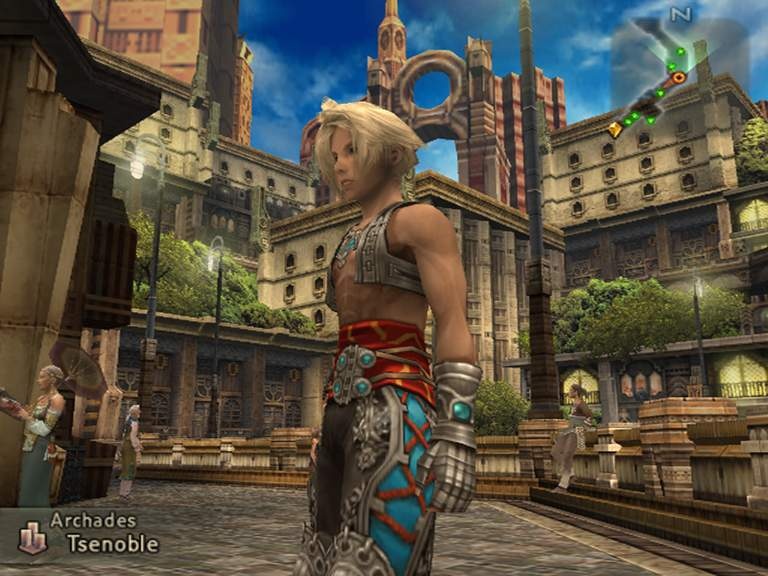
Of course, in any serious battle--and there are a lot of challenging fights in this game--you'll get wiped out if you just sit back and watch. During combat, you can step in to manually issue orders to any party member whenever you wish and may also swap in defeated party members with your alternates (only three of your main characters can fight at a time). In the end, the combat feels highly strategic, because poorly planned gambits will bring disaster. But you can easily change your gambits on the fly or toggle them off for any character if you'd prefer to. You can also adjust the speed at which battles unfold, though the default speed seems ideal. And even if you do find yourself at an impasse with a particular battle, it's usually possible to go off someplace else and come back to it later, after having replenished your supplies, grown stronger, and adjusted your strategy. In the first hours of play, the rather passive combat sequences are somewhat disappointing, since there's really not much to do. But once you've assembled the entire party and the gambit system starts opening up, the combat becomes quite interesting and involved. In short, rather than task you with controlling the specific actions of your different characters, Final Fantasy XII puts you in a more strategic, commanding role.
Ironically, the nature of the underlying combat is the same as ever, which means you'll constantly be trading hits with foes whose own attacks will frequently bring your characters to death's door, just in time for a healing spell to restore them. Many foes will also use status-changing effects in different combinations, like poison or sleep spells, and Final Fantasy players will need to contend with these in familiar ways. You'll also learn special abilities unique to each character and get to summon creatures called espers to temporarily fight for you, elements that will also be familiar to Final Fantasy players. What helps make all the fighting feel meaningful and interesting is Final Fantasy XII's licenses system, another fairly convoluted but ultimately good addition to the game. Your characters all earn license points with each enemy you defeat, and these points are then used to unlock new upgrades and innate abilities for your characters. Much like the combat, the license board gives an odd first impression, because you need a license for literally each and every equipment piece, magic spell, and special ability in the game before you can use them. So you can't equip that crossbow as soon as you find it, and you won't just magically learn the cure spell once you hit a certain level. You need to spend license points on the license.
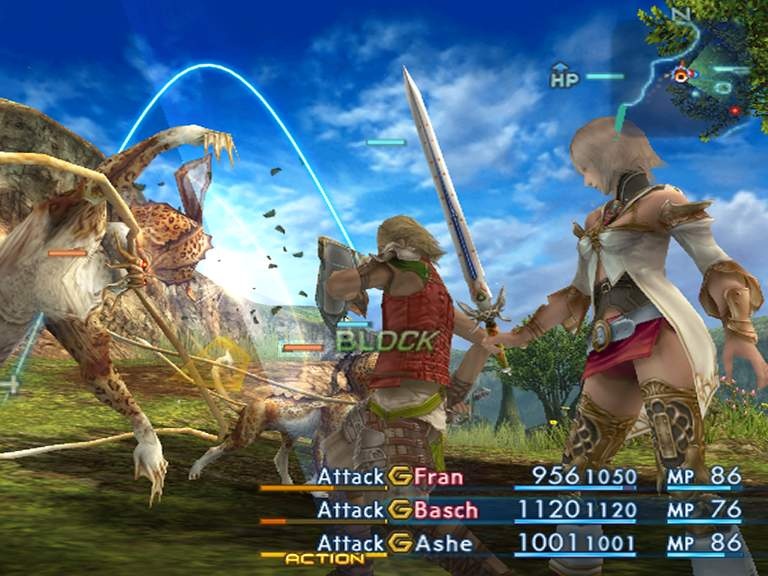
The license board works kind of like Scrabble. You can only acquire licenses next to other licenses you've already acquired, and the licenses along the edges of the board (farthest from your starting points toward the middle) are often tied to the strongest items, spells, and upgrades. Each character starts off with some basic equipment and ability licenses, and the board is roughly split up so that weapon, armor, accessory, magic, combat, and special ability licenses are all grouped together. Licenses for more-valuable abilities tend to cost more points, and the license board also lets you unlock additional gambit slots for adapting your characters' behavior in combat toward increasingly complex battles.
Much like the combat, the license system introduces some trade-offs. The good news is that the intricacies of this system are far more interesting than annoying, and it gives you an incentive to fight just about everything you encounter, even the weakest creatures that are barely worth any experience points anymore. The bad news is you might find yourself getting hung up on trying to figure out the "best" way to unlock licenses for each character, and since the license board is the same for each character, that means each character is also the same, and it's entirely up to you to define their differences and specializations. This may come as no surprise to those who've been keeping up with Final Fantasy for a while, since recent installments in the series have all done this. But it still seems strange that Basch, the captain of the Dalmascan guard, is inherently no better in a sword fight than pig-tailed Penelo. In fact, you could turn Basch into a pure healer / magic user while developing Penelo as your single toughest fighter. This open-ended system adds sophistication and replay value to Final Fantasy XII, but some sort of "autolevel" system probably would have been a good option.
Final Fantasy XII caters to the series' dedicated fans with numerous references to past installments and with plenty of tough battles. Even once you're comfortable that your characters can all operate like a well-oiled machine thanks to the gambits system, you'll still need to spend a good amount of time going out of your way to level them up, earning enough license points to purchase some important upgrades for all of them. Earning money in the game is no simple matter, either. In a slight move toward greater realism, most of the foes you fight don't actually carry any money, but they'll drop trade goods that you can then sell in exchange. Stealing from foes can give you more of these precious items, and throughout the game, you'll be faced with a lot of tough decisions about which weapons, armor, and spells to buy and not to buy. This is to the game's credit, since having to choose which characters will get the best weapons or best armor is more interesting than simply snatching up all the best new gear in each new town you visit. And remember: You'll need to get the necessary licenses for these upgrades, too.
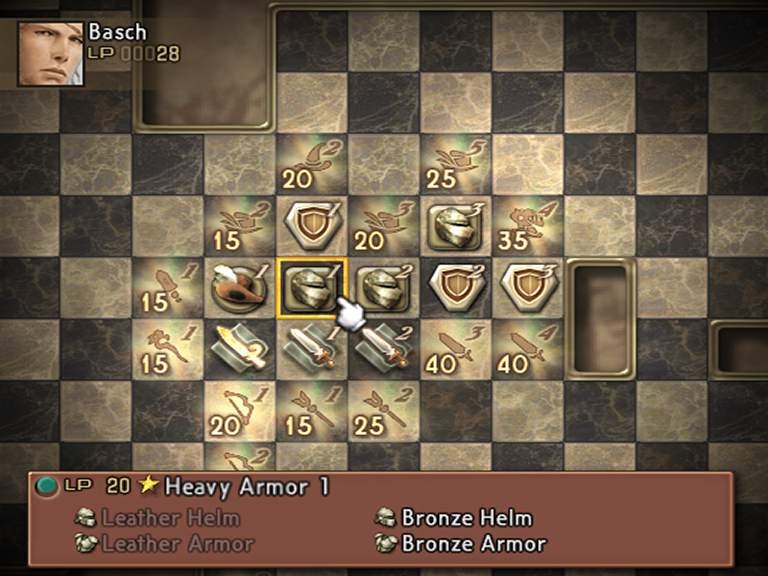
Exploring, fighting, watching the story unfold, and managing your characters using the gambits and licenses systems are where you'll be spending most of your time with Final Fantasy XII, and there's a lot to it. Expect the quest to last you a good 40 or more hours the first time through, and on top of that, there are many hidden and optional areas to explore, bounty-hunter missions to undertake, special rewards to unlock, and more. The game even features a surprisingly well done bestiary, which provides some lively remarks about all the hundreds of different creatures and foes you'll encounter. Overall, the world of Ivalice feels quite big, especially since you'll traverse so much of it on foot. There's definitely a lot of straight-up running around in this game, but since the visuals are so impressive, all the sightseeing is part of the fun.
Final Fantasy XII's art style is different from that of previous games in the series, but longtime fans of Square's role-playing games will note that it bears a clear similarity to the memorable look of 2000's Vagrant Story. In fact, Final Fantasy XII borrows not only the visual style but also some of the sound design from that game, and the results are truly impressive. The game's characters portray genuinely lifelike emotions during the cutscenes, on down to some very subtle changes of expression and use of body language. And the imaginative characters and scenery of Ivalice make it exciting to enter each new area of the game. You'll see some objects just pop into the environments as you explore them, but there aren't a lot of other rough edges to the game's visuals. This isn't the technical marvel that Final Fantasy X was in its day, but it's by every means another gorgeous-looking game in the series, featuring probably the best art style of any Final Fantasy game to date.
A beautifully composed soundtrack is there to accompany every moment, and while it still uses synthesized instruments like the old Final Fantasy games, it sounds fantastic. Some of the familiar themes are in there, along with lots of original compositions that fit the mood and the setting very nicely. Indeed, one other advantage of how the game's combat all takes place seamlessly within the environments is that you don't get stuck listening to the same battle theme all throughout. Final Fantasy XII offers support for widescreen displays and surround-sound setups, and it generally looks and sounds remarkably good even by today's standards.
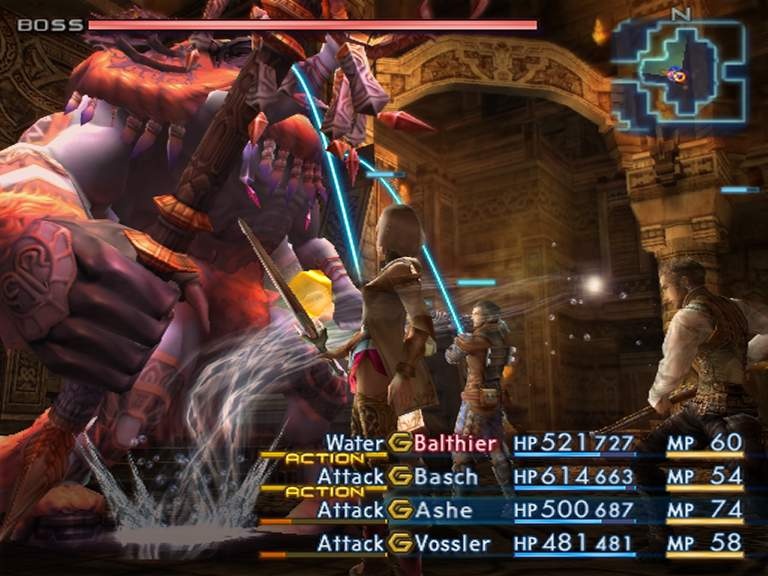
The quality of the game's voice acting deserves special mention, as well. Not every performance is spectacular, but the main characters' voice actors are great fits, and they deliver their lines well. There aren't many recognizable actors in the lot (not unless you count Simon Templeman, who voices Kain from the Legacy of Kain series), but this cast does an excellent job of helping bring the in-game characters to life. Note that Final Fantasy XII isn't fully voiced, as most of the conversations you'll have with townspeople are done in text. If there are any minor issues with the presentation, it's that the characters' lip-synching doesn't quite match the English dialogue and the subtitles often don't exactly match the speech in the cutscenes, but these issues are easy to ignore.
Final Fantasy XII has been a long time coming, and it shows. Thankfully, all the time in development hasn't dampened the quality of the game's presentation, and in spite of however many hundreds of people must have worked on this game for all these years, the end result is a more cohesive game than its predecessors from the series' 3D-graphics era. There's still a disconnect between what happens during gameplay and what happens during cutscenes, but by integrating the combat and exploration, Final Fantasy has come one step closer to being more immersive than before. And while Final Fantasy XII takes some liberties with the series' conventions, it sticks closely to most of the good ones, delivering another memorable and highly recommended experience in the process.



